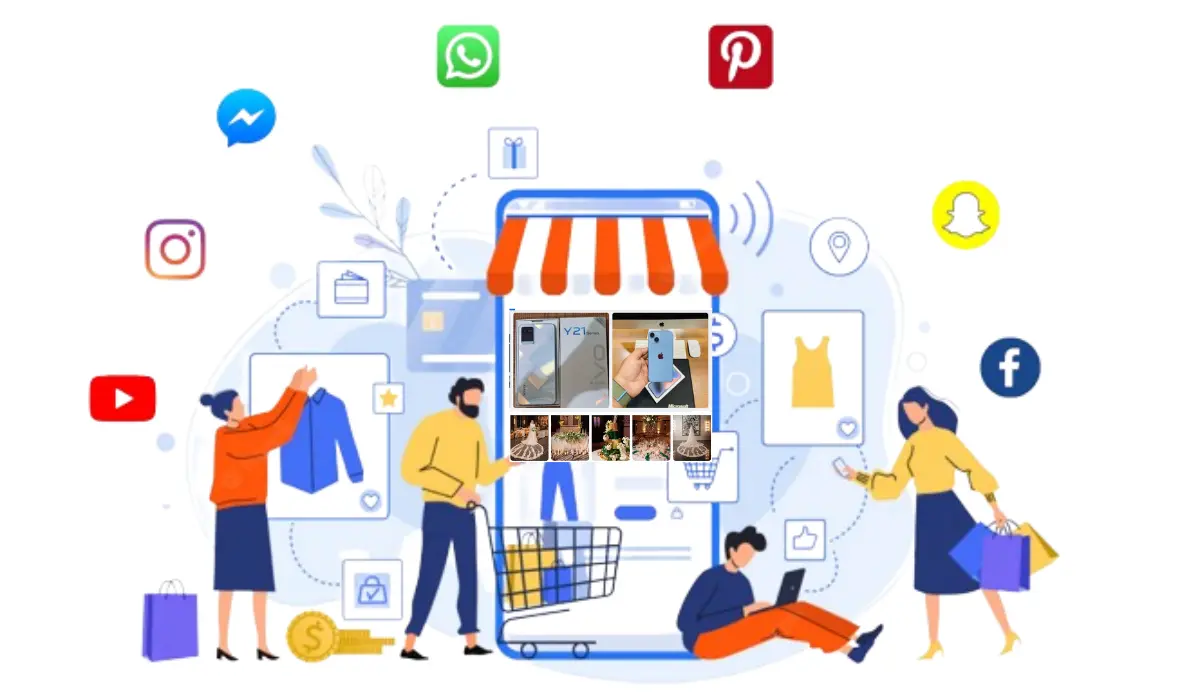Social commerce, the fusion of social media and e-commerce, has emerged as a formidable force reshaping the way consumers shop and businesses sell. This innovative approach leverages the power of social networks to facilitate online shopping experiences, turning platforms like Instagram, Facebook, and TikTok into bustling marketplaces. As we delve into the rise of social commerce, we will explore current trends and predict future developments in this dynamic sector.
Social Commerce Strategies for Small Businesses
Social commerce, the use of social media platforms to facilitate online buying and selling of products and services, can be a powerful tool for small businesses. Here are some effective strategies:
Leverage User-Generated Content (UGC)
Encourage customers to share their experiences with your products by posting photos, videos, and reviews. This not only builds trust but also creates authentic content that can be shared on your social media channels.
Examples: Running contests, featuring customer stories, and creating hashtags for your brand.
Utilize Social Media Shopping Features
Many platforms offer integrated shopping features that allow users to browse and purchase products without leaving the app.
- Instagram and Facebook Shops: Set up an Instagram Shop or a Facebook Shop to showcase products.
- Pinterest Buyable Pins: Use Pinterest’s buyable pins to allow users to purchase directly from the platform.
Influencer Partnerships
Collaborate with influencers who align with your brand to reach a broader audience. Micro-influencers, in particular, can be effective for small businesses due to their higher engagement rates and affordability.
Strategies: Sponsored posts, unboxing videos, and giveaways.
Live Streaming and Video Content
Use live streaming and video content to engage with your audience in real-time. Demonstrate products, host Q&A sessions, and showcase behind-the-scenes looks at your business.
Platforms: Facebook Live, Instagram Live, TikTok, and YouTube.
Interactive Content
Create interactive posts such as polls, quizzes, and stories to engage your audience. These types of content can increase engagement and provide insights into customer preferences.
Personalized Marketing
Use data to personalize your marketing efforts. Tailor your content and offers to the interests and behaviors of your followers.
Examples: Personalized email campaigns, targeted ads on social media, and custom recommendations.
Social Proof and Reviews
Showcase positive reviews and testimonials on your social media profiles. Social proof can significantly influence purchasing decisions.
Strategies: Highlight customer reviews in posts, create testimonial videos, and display ratings.
Exclusive Social Media Offers
Offer special discounts and promotions exclusively to your social media followers. This can incentivize more people to follow your accounts and engage with your content.
Customer Service via Social Media
Provide customer support through social media channels. Respond promptly to inquiries and address concerns publicly to show your commitment to customer satisfaction.
Analytics and Adaptation
Regularly analyze your social media performance to understand what works and what doesn’t. Use insights to adapt your strategies and improve your social commerce efforts.
Tools: Facebook Insights, Instagram Analytics, and third-party tools like Hootsuite or Sprout Social.
By integrating these strategies, small businesses can effectively leverage social commerce to increase their reach, engage with their audience, and drive sales.
Rise of Social Commerce
The rise of social commerce has been a significant trend over the past decade, driven by the increasing integration of e-commerce features into social media platforms and changing consumer behaviors. As technology evolves and consumer behavior shifts towards online interactions, social commerce will likely become an even more integral part of the retail landscape. Small businesses, in particular, stand to benefit by adopting social commerce strategies to reach wider audiences, increase engagement, and drive sales.
Current Trends in Social Commerce
1. Integration of Shopping Features in Social Platforms: Social media giants increasingly embed e-commerce functionalities into their platforms. Instagram Shopping allows users to browse and purchase products directly within the app, while Facebook Shops offers a customizable storefront for businesses. TikTok has also partnered with Shopify, enabling seamless shopping experiences from viral videos.
2. Influencer-Driven Commerce: Influencers play a pivotal role in driving social commerce. Their ability to build trust and connect with audiences makes them powerful brand ambassadors. Influencer marketing campaigns often result in higher engagement and conversion rates, with followers eager to purchase products endorsed by their favorite personalities.
3. Live Shopping Events: Live streaming has become a popular tool for brands to engage with customers in real-time. Platforms like Instagram Live and Facebook Live allow businesses to showcase products, answer questions, and offer exclusive deals. This interactive shopping experience replicates the in-store experience, fostering a sense of urgency and excitement.
4. User-Generated Content (UGC): UGC, such as reviews, unboxing videos, and customer photos, significantly impacts purchasing decisions. Consumers trust peer recommendations more than traditional advertising. Brands are increasingly encouraging customers to create and share content, amplifying authentic endorsements that drive sales.
5. Personalization and AI: Artificial intelligence is enhancing personalization in social commerce. AI algorithms analyze user behavior to provide tailored product recommendations and personalized shopping experiences. Chatbots and virtual assistants are also improving customer service, making the shopping process more efficient and enjoyable.
Also Read
Predictions for the Future of Social Commerce
1. Expansion of Social Commerce Platforms: As the demand for social commerce grows, we can expect more platforms to integrate shopping features. Emerging social media platforms may also develop unique e-commerce capabilities to compete with established players. This expansion will provide consumers with more diverse and innovative shopping experiences.
2. Greater Use of Augmented Reality (AR): AR technology will become more prevalent in social commerce, allowing customers to virtually try on products like clothing, accessories, and makeup. This immersive experience can reduce return rates and increase customer satisfaction by enabling better-informed purchasing decisions.
3. Blockchain and Cryptocurrency: Blockchain technology could enhance transparency and security in social commerce transactions. Additionally, the adoption of cryptocurrencies for payments might become more common, providing users with alternative payment options and facilitating cross-border transactions.
4. Sustainability and Ethical Shopping: Consumers are increasingly prioritizing sustainability and ethical considerations in their purchasing decisions. Social commerce platforms may integrate features that highlight eco-friendly products and socially responsible brands. Transparency about product sourcing and manufacturing practices will become a key selling point.
5. Enhanced Data Privacy Measures: As data privacy concerns grow, social commerce platforms will need to implement stricter data protection measures. Businesses will have to ensure compliance with regulations and adopt practices that safeguard customer information, building trust and loyalty among consumers.
Also Read
Conclusion
The rise of social commerce signifies a transformative shift in the retail landscape, blending social interaction with seamless shopping experiences. Current trends like integrated shopping features, influencer-driven commerce, live shopping events, user-generated content, and AI-driven personalization are reshaping consumer behavior and business strategies. Looking ahead, the expansion of social commerce platforms, greater use of AR, and blockchain technology, a focus on sustainability, and enhanced data privacy measures will continue to drive the evolution of this dynamic sector. As social commerce grows, it will undoubtedly create new opportunities and challenges, ultimately redefining how we shop and interact with brands in the digital age.







